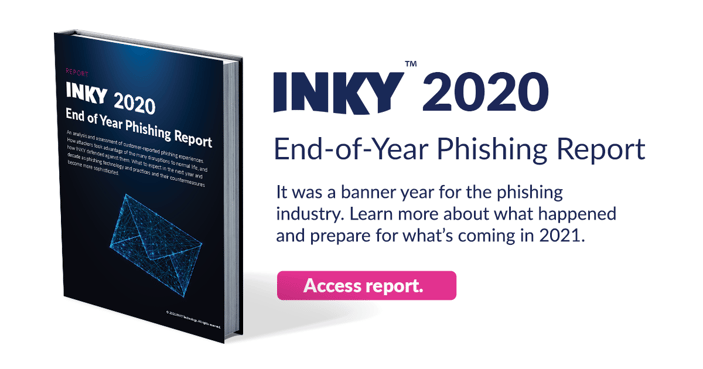Few would argue that 2020 was a pretty bad year. A raging pandemic, wildfires, racial unrest, a troubled economy, impeachment proceedings, Kobe, political tensions, travel restrictions, Olympic postponements, virtual classrooms, and as if this wasn’t enough, soaring rates of cybercrime.
The unfortunate events of 2020 created a perfect storm for hackers and cybercriminals, both of whom wasted no time creating thousands of never-seen-before phishing scams. To make matters worse, an unprecedented shift to remote working also brought a great deal confusion and worry. In the end, organizations and their employees were unprepared for to sophisticated phishing schemes that would come their way.
Cybercrime statistics for 2020 continue to be calculated, however they promise to greatly outpace the $3.5 billion in losses experienced in 2019.1 That said, 2020 also proved to be a wake-up call for countless organizations that had yet to implement email phishing strategies designed to protect them from the growing threats.
One emerging hero in the war against email phishing is INKY. INKY is uniquely designed to catch everything from spam and malware to phishing threats and CEO fraud using intelligent machine learning algorithms to identify abnormalities in emails, even if the threat has never been seen before. In 2020, INKY caught some whoppers. Consider some of these phishing phenoms and ask yourself a simple question: “Could one of my employees be duped into falling for one of these phishing threats?”
A phishing email cleverly disguised as a letter from the Center of Disease Control (CDC) sharing the whereabouts of new COVID-19 cases.
An email from your company president asking for a personal favor while he is out of the office and away from his work computer.
Your company insurance company, sending and invoice for COVID-19 coverage.
A stimulus payment notification from the Federal Reserve.
Your HR department sharing its COVID-19 policies for remote workers.
Dropbox has an important file you’ll need for an upcoming meeting.
Your QuickBooks account is up for renewal.
Are you waiting for an approval of credit? Click here.
These are just a few of the phishing emails caught with the INKY Phish Fence. If these short descriptions have you curious, you should take a few minutes to review the specifics found in INKY’s 2020 End of Year Phishing Report. Here you will also learn more about industries that are most targeted by cybercriminals and see what phishing scams INKY is predicting for 2021.
While the technology driving INKY is complicated, it’s phishing alerts are not. The INKY banner graces every email and warns your employees of phishing threats as it protects, trains, and empowers users across the enterprise. What’s more, installation is simple. INKY uses the latest technologies throughout the setup and deployment process. Most customers are up and running in under an hour – even with remote employees.
Help ensure 2021 doesn’t turn out to be your company’s worst year in memory by protecting it from a large-scale phishing attack. Schedule your free INKY demonstration today.
----------------------
INKY® is the emerging hero in the war against phishing. An award-winning cloud-based email security solution, INKY® prevents the most complex phishing threats from disrupting or even immobilizing your company’s day-to-day business operations. Using computer vision, artificial intelligence, and machine learning, INKY® is the smartest investment you can make in the security of your organization. INKY® is a proud winner of the NYCx Cybersecurity Moonshot Challenge and finalist in the 2020 RSAC Innovation Sandbox Competition. Learn more about INKY® or request an online demonstration today.
1Source: https://www.mcafee.com/enterprise/en-us/assets/reports/rp-hidden-costs-of-cybercrime.pdf


